Corpus of the Inscriptions of Campā

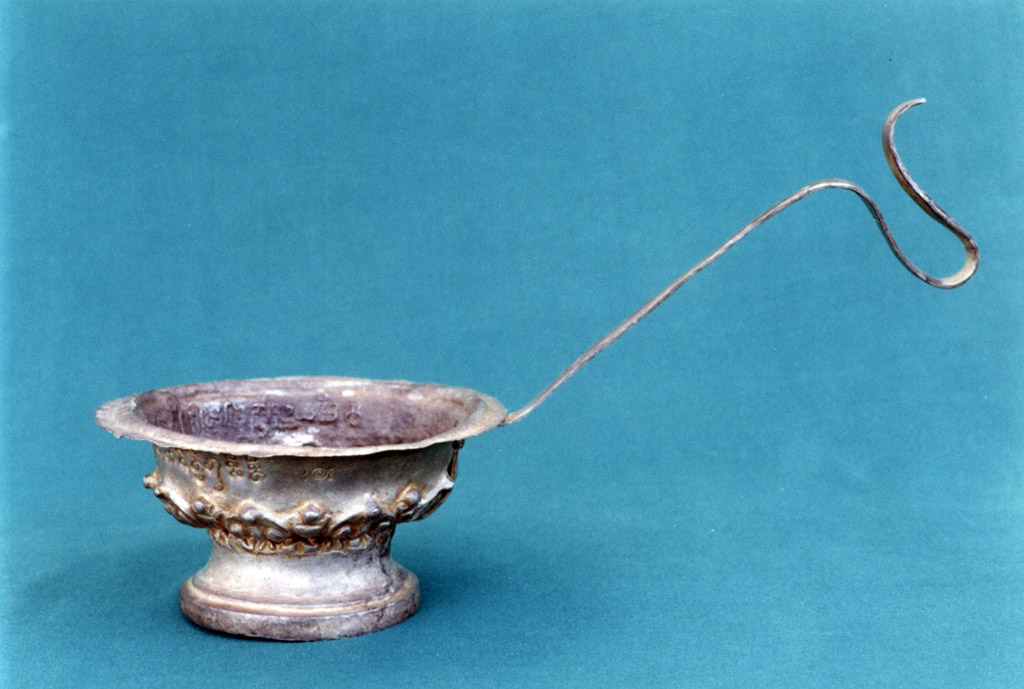

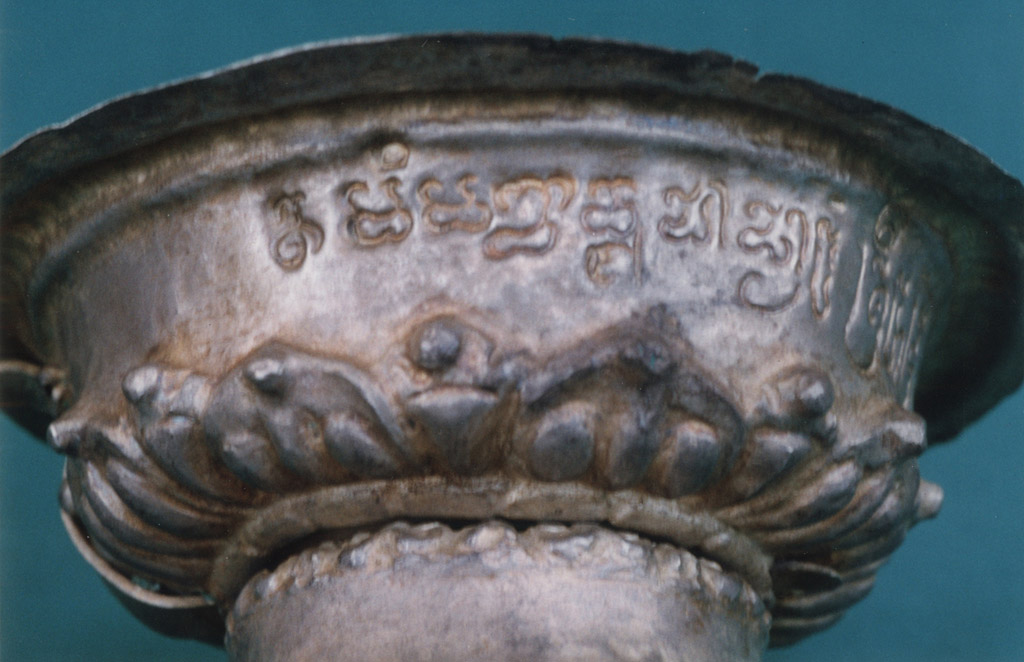
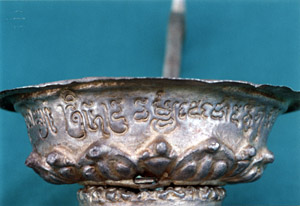
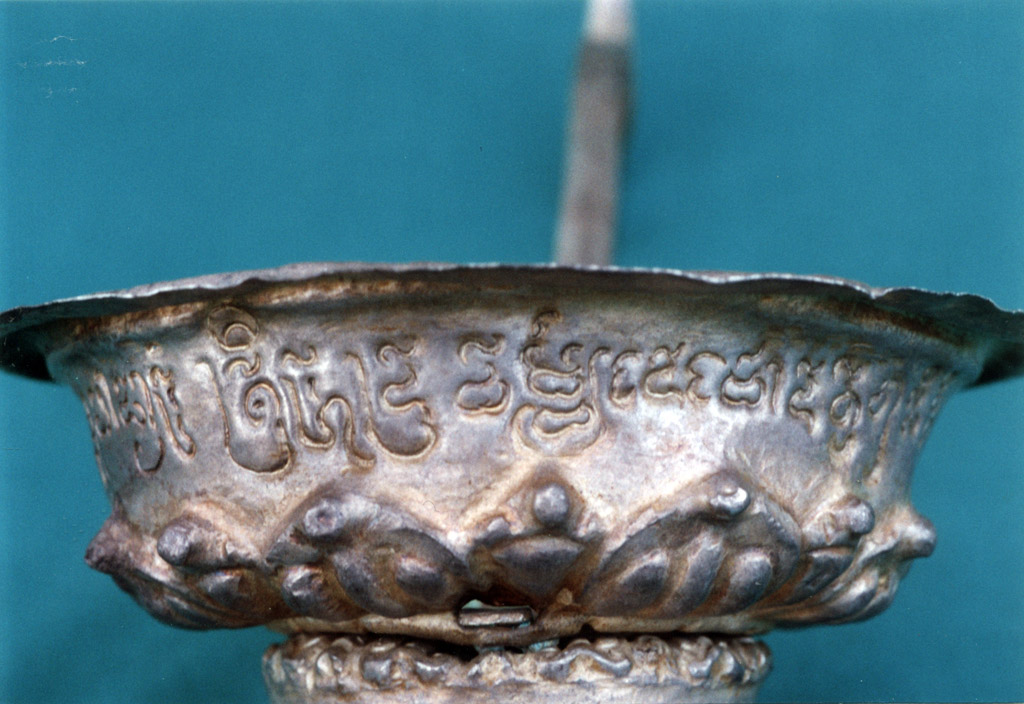
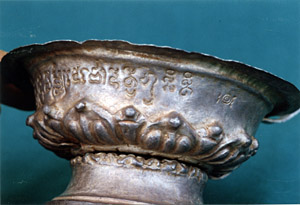
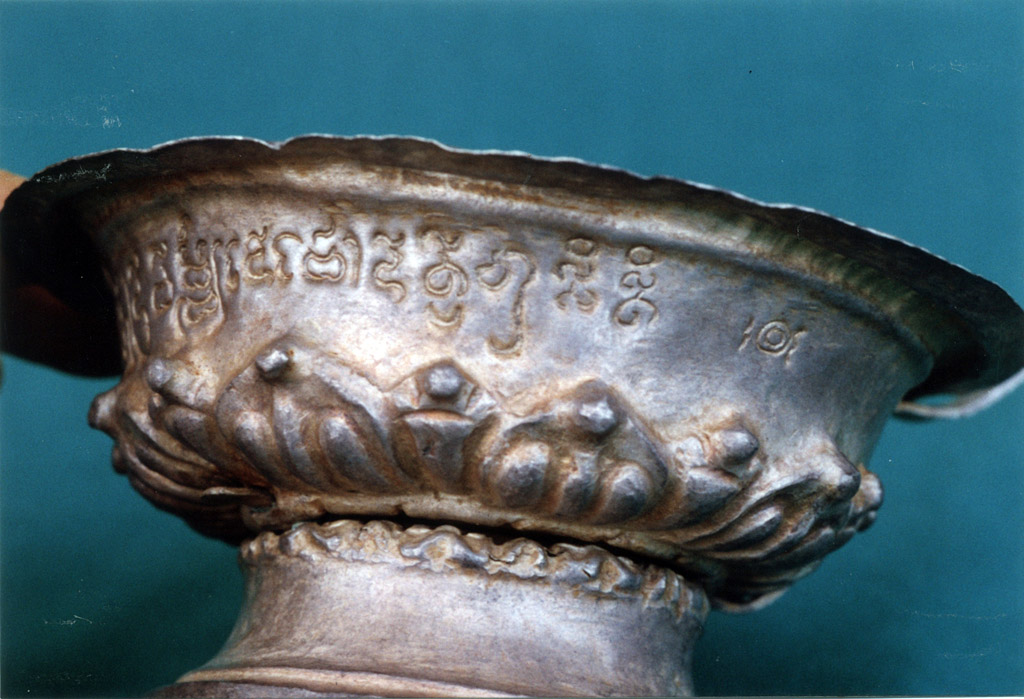
C. 206 Censer (dhūpādhāra)
Please note: you are reviewing a preprint version of this publication. Contents here may change significantly in future versions. Scholars with specific interests are urged to consult all cited bibliography before using our texts and translations or drawing other significant conclusions.
Support Censer; silver; reportedly (Lê Xuân Diệm & Vũ Kim Lộc 1996: 88) h. 6.7 cm, diameter (mouth) 12.4, length (handle) 15.
Text One line engraved around the body of a censer written in Sanskrit.
Date First half of the 9th century CE.
Origin Settlement of Đồng Dương (Quảng Nam).
This piece was part of the private collection of Mr. Vũ Kim Lộc in Hồ Chí Minh City in 1996 (see Lê Xuân Diệm & Vũ Kim Lộc 1996: 88-91) and remained there at least until 1999, when Anne-Valérie Schweyer published a study of this censer and two other inscribed objects in the same collection (C. 205 and C. 207; see also C. 208 and C. 209). It was no longer held by Mr. Vũ Kim Lộc when we visited him in 2009. He informed us that the artefact had been donated to the Museum of Ethnology at Hà Nội, but we were unable to trace it there (see ECIC III: 475).
Edition(s) An unreliable decipherment and translation by Thái Văn Chải is included in Lê Xuân Diệm & Vũ Kim Lộc 1996: 90. The first serious attempt at decipherment is that, with French translation, in Schweyer 1999: 349; whence, with English translation, in Golzio 2004: 60. New reading proposed in ECIC III: 479.
The following text was edited by Arlo Griffiths.
tam imañ ca dhūpādhāraṃ ◇ [ta mi ma smam] sahādhāraḥ Schweyer. There is clearly no visarga but rather the expected anusvāra. — |⊚| ◇ The punctuation is not represented by Schweyer.
Translations
English
And Śrī Rudravarmadeva has given this censer here.
French
Et Śrī Rudravarmadeva a donné ce porte-encens-ci.


